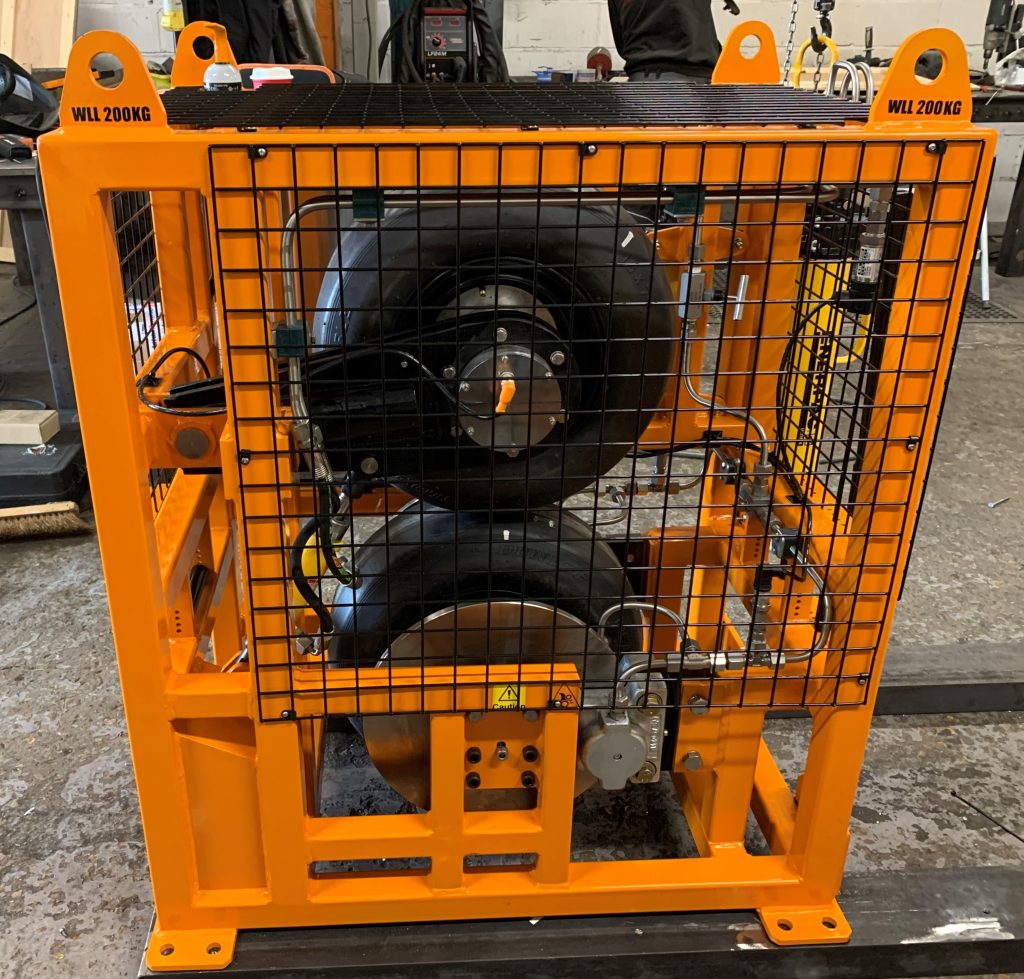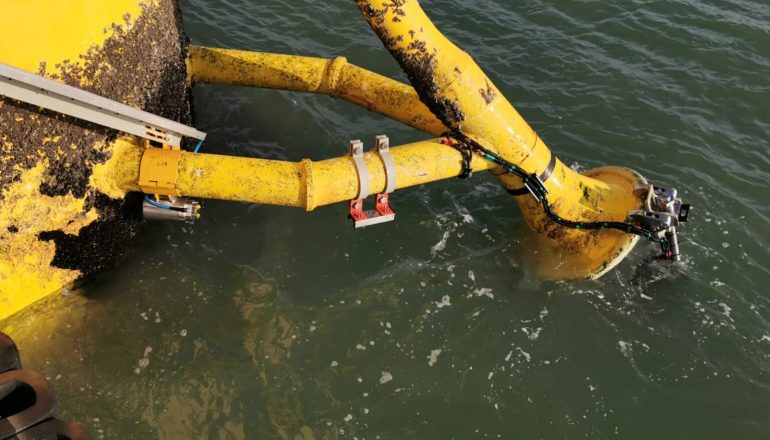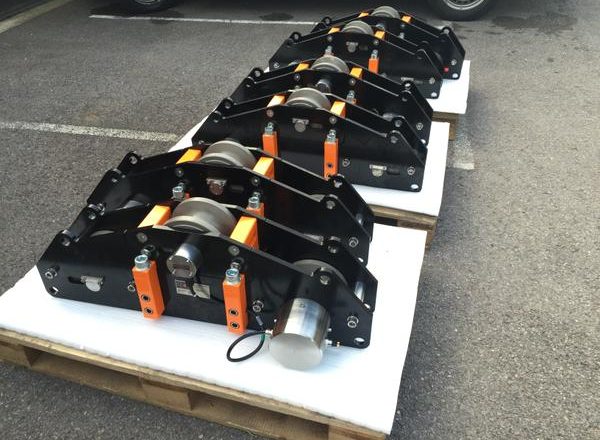January 7, 2022
Dynamic Load Monitoring (UK) Ltd. (DLM), of Southampton, UK has expanded its already extensive range of line tension measurement technology, with a new device for measuring tension and creating holdback force on a single piece of subsea cable. The product, which combines the established Saddleback product from DLM’s catalogue with an additional Hold Back Tension element, is being primarily used by the vessel NKT Victoria. With further devices in the pipeline for a number of customers.
When consulted about a solution for measuring line tension and creating a holdback force for a cable lay project, DLM, a specialist in the design, manufacture, repair and calibration of load cells and load monitoring equipment, devised the Saddleback Holdback Tensioner (SB-HBT).
The SB-HBT (it weighs 450kg) works by creating additional line tension on the subsea cable running through it, specifically for bundled cable lays. A Saddleback can measure line tension from 0 to 5,000kg and is suited for more delicate cable, including telecommunication cables or large cable where a Running Line Monitor is unsuitable. Moreover, a twin pair of Dunlop 18 x 7 SMO LCE tyres are connected to a hydraulic cylinder to clamp the two wheels together, and a disc braking system is used to control the rotational speed of the wheels on the SB-HBT. The device can create 750kg of clamping force between the wheels and holdback 500kg of line tension. On the top wheel there is an encoder to measure speed and distance.
Chris Scrutton, technical manager at DLM, said: “This is the first requirement we have had [for the SB-HBT] but we have discussed it with other potential customers; this seems to be a reoccurring problem aboard vessels. It can be used when a cable laying vessel is completing a new lay project, and needs to control the departure speed to small diameter cables being bundled alongside larger cable diameters. The reason for doing this is that the small diameter cable often does not bundle tightly enough with the larger diameter cables and can run free of the bundle when departing off of the vessel.”
In this instance, NKT, a provider of turnkey cable solutions that meet the ever-growing demand for power, is using the SB-HBT on a 22mm-diameter fibre optic cable. The ‘holdback’ (holdback force is essentially a term for adding line tension to a cable) element of the device creates additional tension to control the departure speed of the cable for bundling with DC power cable prior to being laid subsea.
An Enerpac cylinder compresses the top and bottom wheel together to create grip pressure onto the cable before the brakes are employed to slowly rotate the wheels. Without clamping the two wheels together, the cable would simply run free. The (orange) HBT element houses all of the components, while the Saddleback is the item bolted to the front of the frame.
Scrutton said: “This was another project where we were approached by a client with a design brief to develop a product for their application. NKT had a specific requirement for a device that could measure the line tension and create the holdback force. The concept went from a design discussion to a delivered product in less than six months.”






